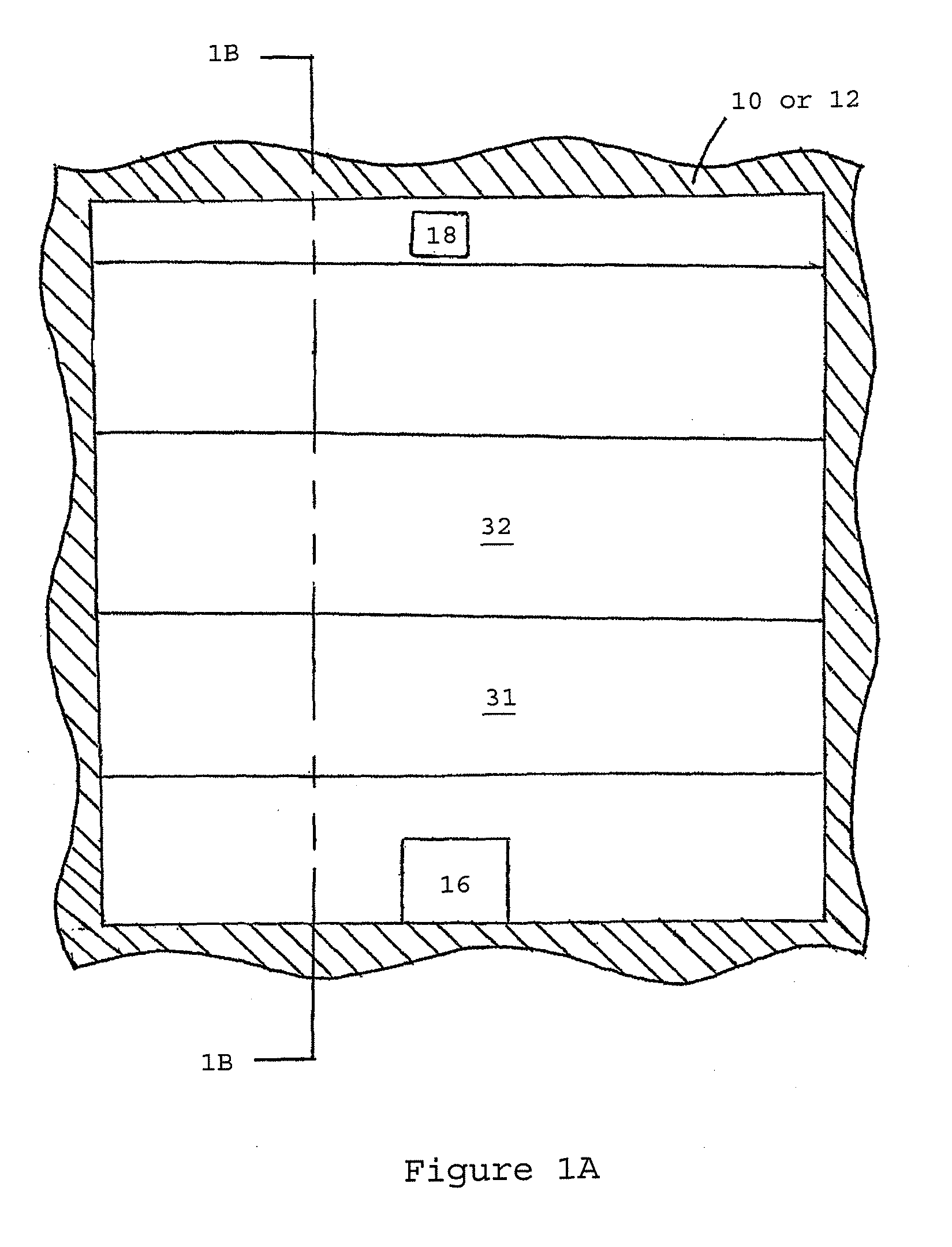Methods and Apparatus for Segregation of Particles
a technology of particles and apparatus, applied in the field of methods and apparatus for segregation of particles, can solve the problems of increasing the cost, the relative large volume of blood storage, and the need to store 100 to 250 milliliters
- Summary
- Abstract
- Description
- Claims
- Application Information
AI Technical Summary
Benefits of technology
Problems solved by technology
Method used
Image
Examples
example 1
Separation of Fetal Cells from Maternal Blood
[0173]An apparatus of the type disclosed herein was used to separate fetal-like, large nucleated cells from other cells in a 1 milliliter sample of maternal blood.
[0174]The polycarbonate apparatus was constructed using a known epoxy resin casting process and included a body 10 having an integral separation element 14 in each of eight channels defined by the body 10. Other materials acceptable for this application include cyclic olefin copolymers, and polypropylene cyclo-olefin polymer.
[0175]The separation element had six steps defining serially-arranged passages in a stepped passageway, the passages having narrow dimensions of 10, 7, 5, 4, 3, and 2 micrometers, respectively. Each step (and passage) had a length of 1 millimeter. A standard glass microscope slide clamped to the body 10 was used as a cover 12. Portions of the body 10 between the discrete stepped passageways served as supports 20. The cover 12 was bonded to the body 10 using ...
example 2
[0180]Assessing assembly of an apparatus described herein can be achieved by observing light reflected, refracted, or both reflected and refracted from the apparatus under illumination. FIG. 5 is a color image which depicts the pattern of light observed on an appropriately assembled apparatus.
[0181]The apparatus shown in FIG. 5 is formed of a plastic body having a separation element integral therewith and having a flat glass cover applied thereto. A stepped passageway is defined by the cover on the (here) upper face of the stepped passageway and by the separation element on the (here) lower face of the stepped passageway. Nine supports extend substantially the entire length of the separation element, from the inlet region (in the direction of the arrow shown in FIG. 5) to the outlet region, dividing the stepped passageway into 10 separated flow channels. The separation element has eight flat portions essentially parallel to the cover, the flat portions (steps) defining distances of ...
example 3
Isolation of Fetal Cells from a Human Chorionic Villus Sample
[0183]In the experiments described in this example, an apparatus of the type described in this application was used to segregate fetal cells from a mixture of adult and fetal cells that was present in a chorionic villus (CV) sample obtained from a pregnant woman known to be carrying a male fetus.
[0184]The apparatus used in the experiments described in this example was a two-piece cassette having a body manufactured from polycarbonate using a micro-injection molding process and a glass cover, the body having a separation thereon defining multiple steps between the separation element and the cover, as shown in FIG. 6. The body and cover of the cassette defined a void having an inlet region and an outlet region. The inlet and outlet regions were in fluid communication with each other by way of a separation region. The separation region included a flat segment (i.e., a relatively broad passageway) wherein the minimum distance ...
PUM
 Login to View More
Login to View More Abstract
Description
Claims
Application Information
 Login to View More
Login to View More - R&D
- Intellectual Property
- Life Sciences
- Materials
- Tech Scout
- Unparalleled Data Quality
- Higher Quality Content
- 60% Fewer Hallucinations
Browse by: Latest US Patents, China's latest patents, Technical Efficacy Thesaurus, Application Domain, Technology Topic, Popular Technical Reports.
© 2025 PatSnap. All rights reserved.Legal|Privacy policy|Modern Slavery Act Transparency Statement|Sitemap|About US| Contact US: help@patsnap.com



